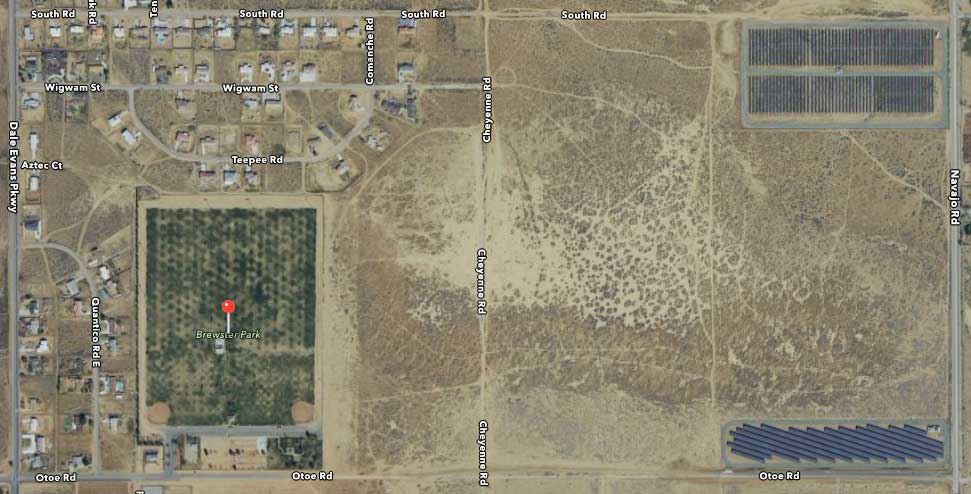What the TOAV should be doing with our money (August 8, 2015)
The Town of Apple Valley (TOAV) spent millions purchasing the Apple Valley Country Club (AVCC), which some (such as myself) feel was a folly. Even now, years after the purchase, the AVCC (AKA Apple Valley Golf Course) continues to lose hundreds of thousands each year, although TOAV representatives tell us it is almost breaking even.
Now, TOAV has spent at least a million dollars — with hundreds of millions more needed — pursuing the hostile takeover of Apple Valley Ranchos Water Company (AVRWC).
Even should it prove successful
in seizing control of AVRWC, TOAV then has to run a water utility, something at which it has proven to be woefully inadequate. Thus, we as taxpayers are very likely looking at a scenario where the TOAV has put us on the hook for hundreds of millions of dollars of bonds or loans, and is making a dog’s lunch of our water system. Were this to happen, the quality of our water system would degrade at an astonishing clip, while our rates would climb like you can’t imagine.
So, what is to be done? Well, clearly the TOAV is not averse to spending money, even on questionable projects. Short of a recall to replace the Town Council (and culpable staff), this trend is likely to continue. So the obvious question is, As long as the TOAV is spending our tax dollars and putting us in debt for years (or decades) to come, what should it be buying?
Here is my proposal.
According to the TOAV, it has received somewhere in the neighborhood of $12 million for the construction of a wastewater treatment plant at Brewster Park, in collaboration with the Victor Valley Wastewater Reclamation Authority (VVWRA).

This project is going forward, and at any rate, it’s money that the TOAV cannot afford to repay. Because it is already committed, TOAV should do the job right.
According to the U.S. Department of Energy, energy use can account for as much as 10 percent of a local government’s annual operating budget. A significant amount of this municipal energy use occurs at water and wastewater treatment facilities. With pumps, motors, and other equipment operating 24 hours a day, seven days a week, water and wastewater facilities can be among the largest consumers of energy in a community. Nationally, the energy used by water and wastewater utilities accounts for 35 percent of typical U.S. municipal energy budgets, according to a 2008 study by the New York State Energy Research and Development Authority. Electricity use accounts for 25–40 percent of the operating budgets for wastewater utilities and approximately 80 percent of drinking water processing and distribution costs (ibid.). Drinking water and wastewater systems account for approximately 3–4 percent of energy use in the United States, according to the Environmental Protection Agency.
Add to this that Governor Jerry Brown has dramatically increased California’s climate-change goals, committing the state to use renewable energy for half its electricity in just 15 years. [Source: abcnews.go.com/US/wireStory/california-governor-sign-aggressive-climate-change-bill-34300635]
With this in mind, TOAV should start taking action now to mitigate the impact of the power requirements of this wastewater facility by constructing a solar generating plant adjacent to its wastewater treatment plant.
We have two things in abundance here in the desert: Open land and sun. As you can see in the aerial view above, there is a plenty of open land adjacent to the treatment plant. You can also see that there are already two other solar power projects in the vicinity, each run by sPower. This confirms that we receive enough energy from the sun to make solar installations feasible. sPower’s motto is Any stage. Anywhere. Any type.
sPower seems to be exactly what TOAV needs; an experienced energy partner that can help with the construction and maintenance of a large solar facility, and is already familiar with our area.
If the land in question is not for sale, TOAV can fulfill its dream of condemnation, which it is angling to do with Ranchos (following their mistaken understanding of what condemnation is supposed to accomplish). Then, all that land can be turned into a solar farm that may even provide more power than needed for the wastewater facility, which would result in income for TOAV.
To sum up, the TOAV should augment its existing wastewater project by adding solar power generation. It should sell whatever water rights remain from the AVCC purchase to AVRWC, and stay out of the water business.
— Greg Raven is Co-Chair of Apple Valley Citizens for Government Accountability, and is concerned about quality of life issues.